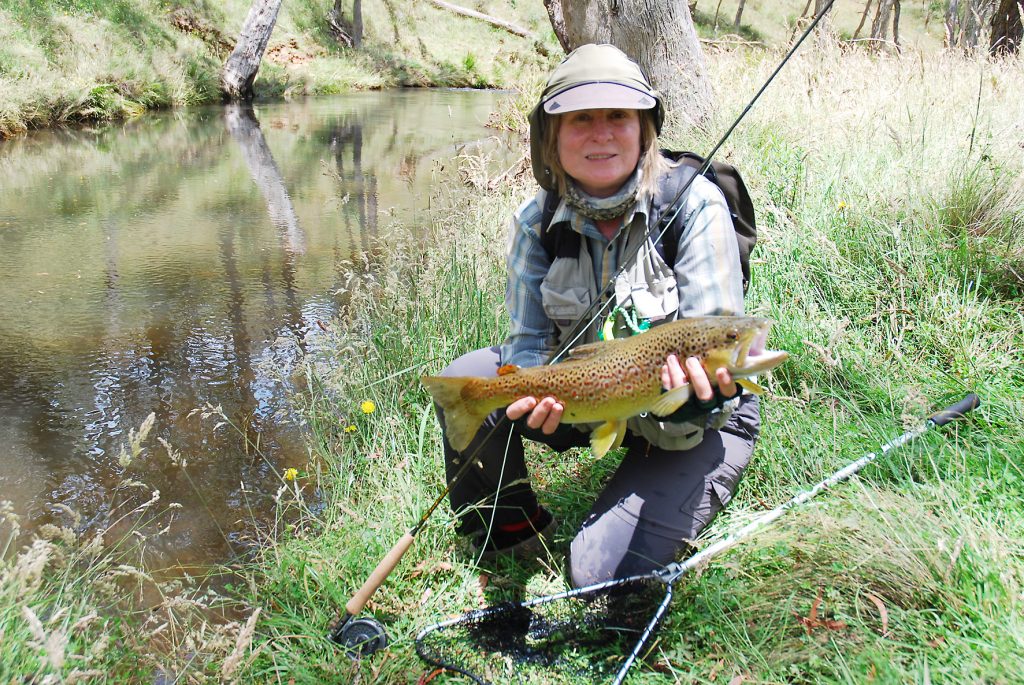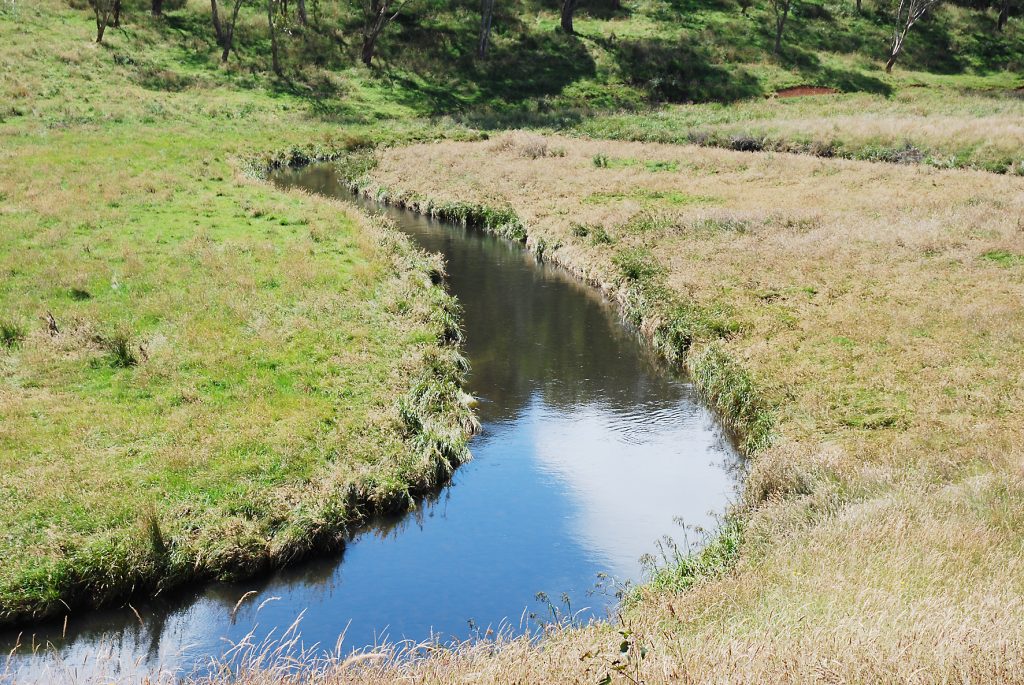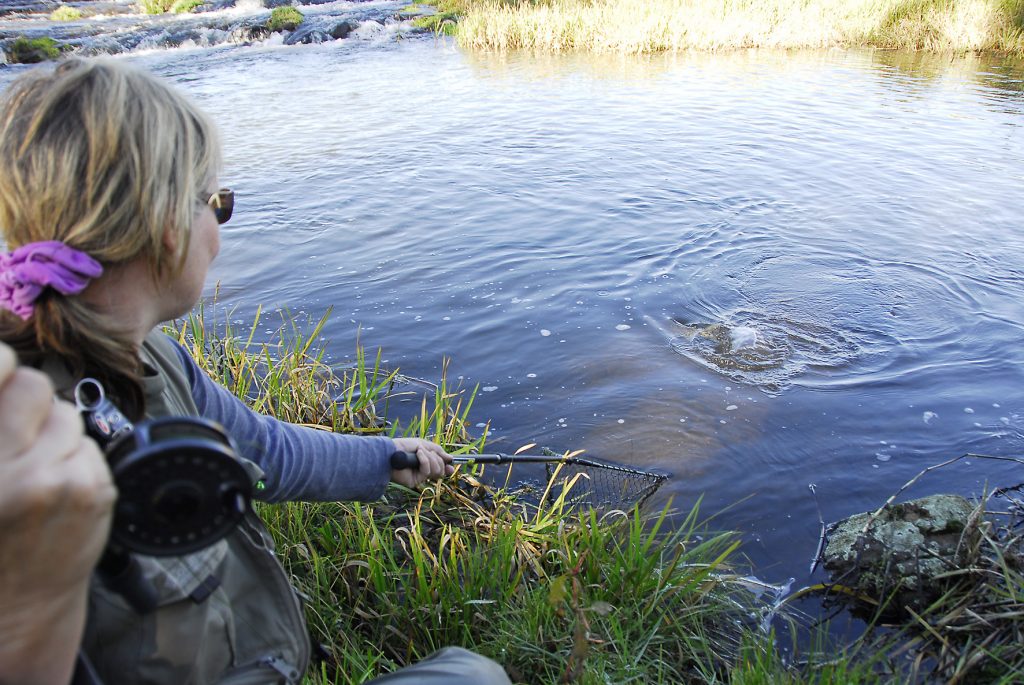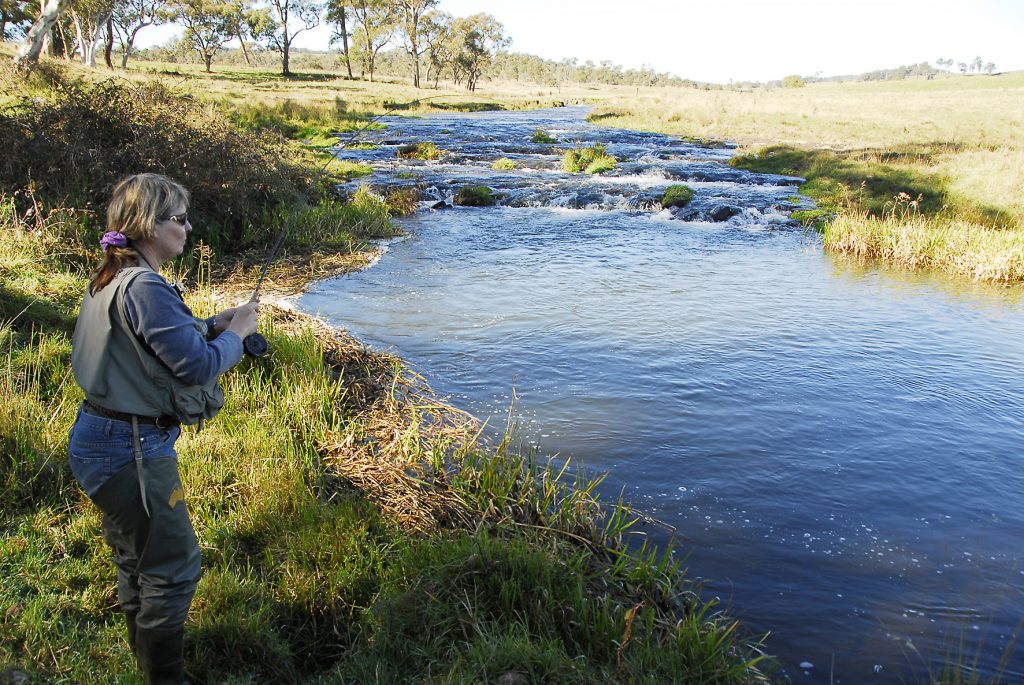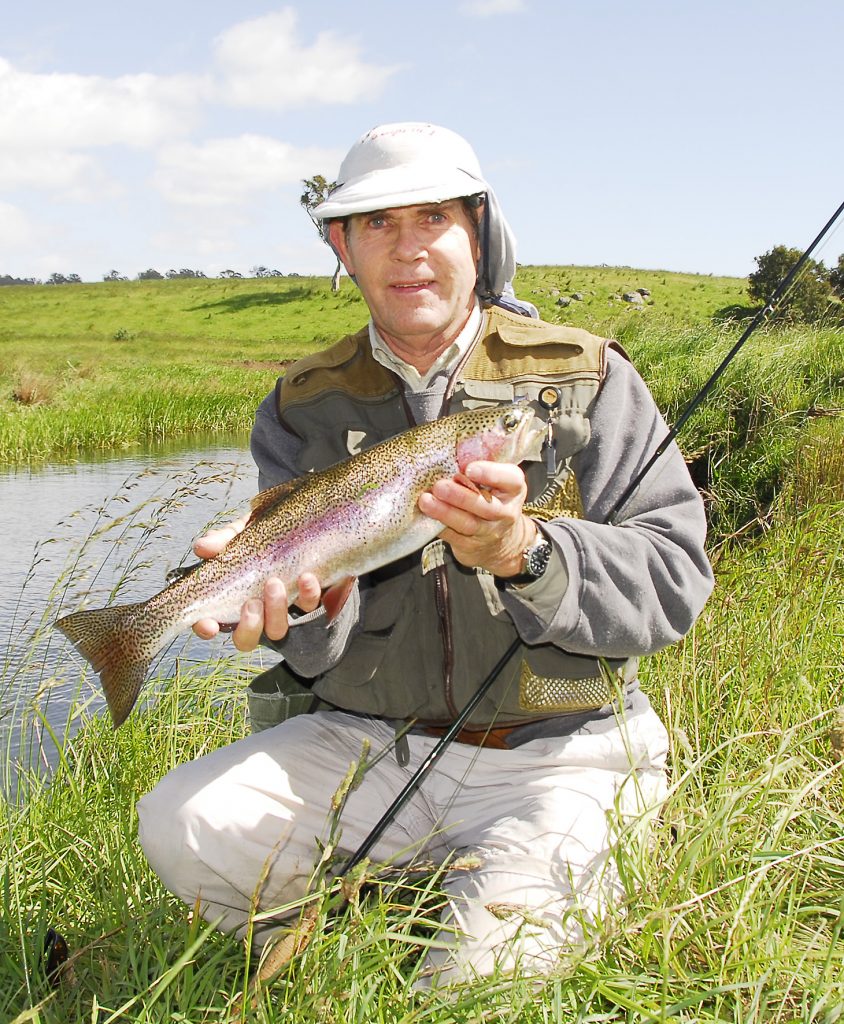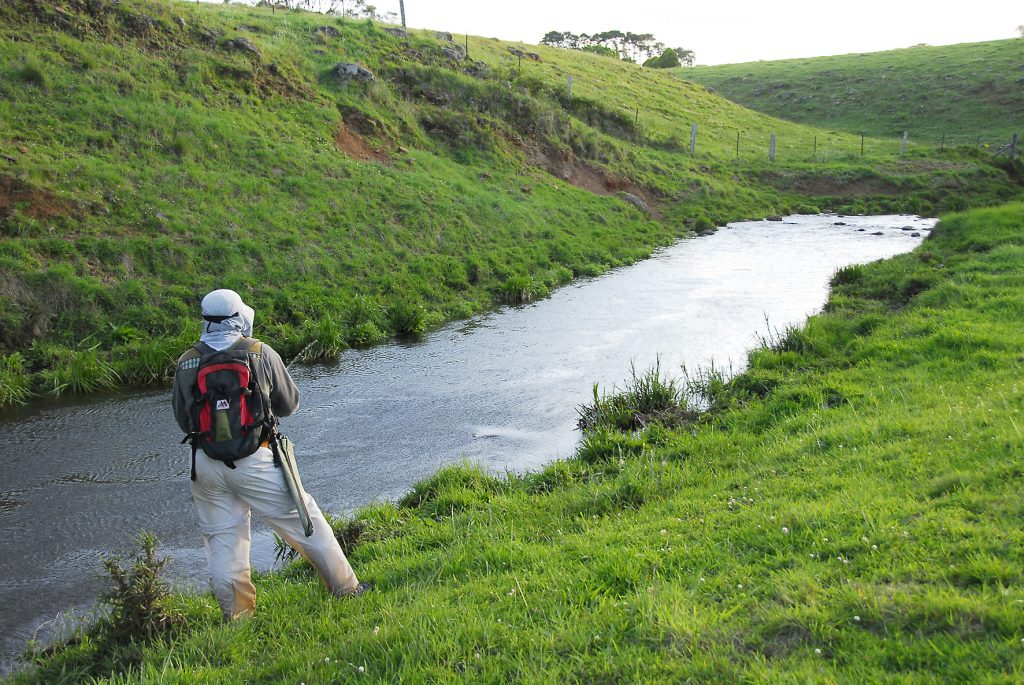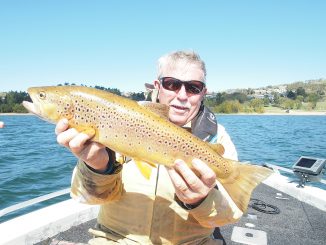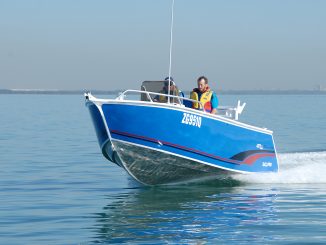
by Wayne Kampe •
Every year New England trout seem to surprise me. During last summer, water temperatures in some of these waterways reached high levels that fairly tested the survival of the resident trout. With low levels and tepid water the fish seemed doomed in some instances, yet they somehow held on. It seems natural selection has spawned a breed of fish that are tougher than the norm!
After some great top-up flows, courtesy of Cyclone Debbie, fishing was great, which is how it ought to be for this season. Stream levels are hard to predict in the short lead-up to the opening weekend – so much can change over only a couple of days, so it might be wise to think a little ahead and consider some options to cover all bases.
Option 1 – Low and clear water
With pre-spring rains being a bit hit and miss, I rate the low/clear water option a strong possibility in some areas. Fortunately, New England nights are still very cold and daytime temperatures are hardly reaching 20°C, so high water temperature is not a factor; it’s just that low and clear water makes the need for stealth essential to fool these sharp-eyed and permanently wary fish that react to even a heavy footfall, let alone the sight of an angler moving along the bank.
In skinny water the fly angler arguably has the best of it in that the presentation of a small fly creates very little disturbance, yet will often attract a fish to see what sort of yummy offering has just landed in its larder. The trout motto is ‘if it falls in, eat it!’
Dry flyfishing is at its best in shallow New England waters where a 5-6wt outfit is a treat to use. A Red Tag, Geehi Special or Royal Wulff dry fly (size 12 or 14) on a 3m leader finishing in a 2kg breaking strain tippet is a lot of fun to use in many of the high country waterways’ upper sections. Casting gently into pool’s heads, side bubble trails or areas where water detours against an undercut or shaded area will usually put a smile on your face as the fly vanishes in a tiny swirl and the lift of the rod is accompanied by a solid pull.
Where smaller runs tip into deeper New England pools, upgrade the fine tippet to a stronger one, as there’s every chance a small water 28cm rainbow or brown is going to be replaced by a 45-50cm one, which is going to give the 5-6wt tackle a real work out. A 3kg tippet wouldn’t be out of place in this situation – the rippled run of water will hide the tippet well and all the angler needs to do is keep all slack out of the equation by retrieving it while watching the fly for that subtle disappearance, or the brief glimpse of a trout’s head, that signifies a fish has taken it.
A fly fishing rig, based on a floating fly line set up in the manner I’ve described, will be ideal for prospecting those fabulous little streams around Ebor, Guyra, Armidale and other higher areas where trout do so well.
If the surface activity seems to have shut down (no lookers after lots of casts), the use of a wet fly such as a size 8 or 10 black or dark green Woolly Bugger will often get some action going again. Stick to casting into the side runs, shaded areas or bubbly sections while maintaining a short stripping retrieve to feel for the take.
To sink a wet fly (size 10 black beetle patterns are also good), all that’s necessary is to rub the floatant Mucilin off the leader tippet with a rag and then smear the tippet and around a metre of the leader behind it with some streamside mud. A couple of rubs with a handful of soft mud will do the trick and this will sink the wet fly rapidly and ensure the best chance of success.
Option 2 – It’s been raining!
If New England high country streams have been blessed with good rainfall just prior to the opening or during an angler’s foray, there’s every chance that streams might be somewhat discoloured. The smart angler will work towards the smaller up-country sections of recognized trout waters and mainly stick with wet flies for searching fish-holding areas around the aforementioned heads of pools, side areas of main bubble trails and any shaded sections with some depth about them.
Light tackle spinning
When the water’s up in the grass or discoloured this also provides a great opportunity for the keen spin angler who enjoys using tiny plastics or mini hardbodied lures and the like on ultra fine tackle. Remember that tiny lures with tiny trebles on them will usually foul in the net (trout require a landing net, as they always jump and carry on at close quarters). When this happens, the fish have a very hard time of it while the angler tries to extract trebles from both a flapping fish and the net at the same time. A single hook is often a kinder option if catch and release is planned. Remember though, whether it’s the fly rod or the spin rod in your hand, a discreet, gentle approach will always yield far more fish.
Consult the map
With the guaranteed popularity of New England trout waters over the next few months, the really smart angler will put as much distance between where they parked the car and where they fish – after requesting permission to fish from a land owner, as most of the trout waters are on private property. With angler presence a certainty in the first few weeks, better small water fishing is always assured where the trout have been least disturbed. A hard look at good old Google Earth will really pay dividends for a day on the water.
Other things you’ll find handy are sun protective clothing, a backpack for extra gear and tucker, and thigh waders (if the budget runs to them) to keep your legs dry. A New South Wales fishing licence is available online. Lastly, forceps for removing tiny hooks are much more efficient than fingers.

